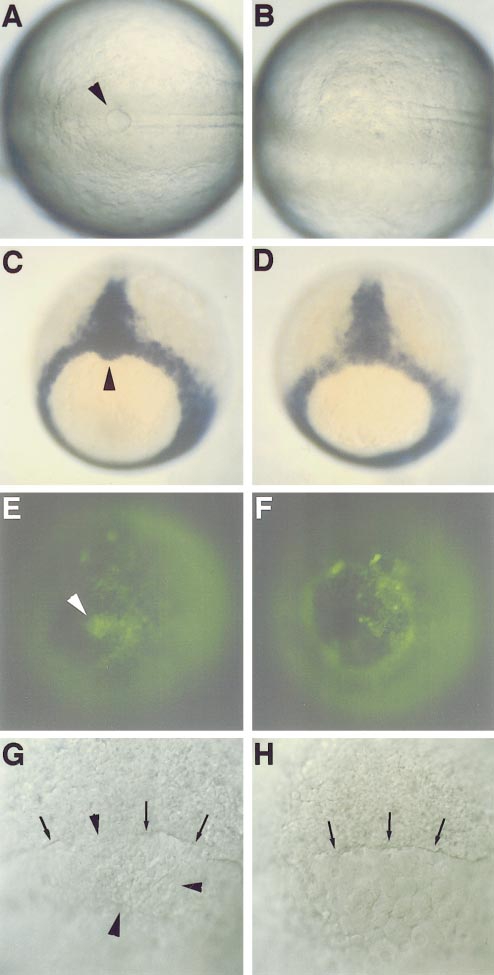Fig. 6 The forerunner cells do not form in cas mutants. Wildtype and cas mutant embryos were examined by light microscopy (A, B), in situ hybridization for expression of ntl (C, D), syto-11 fluorescence (E, F), and Nomarski optics (G, H). Embryos are at the following stages: (A, B) 6-somite, (C, D) 70% epiboly, (E, F) 90% epiboly, and (G, H) shield. Kupffer’s vesicle, formed by the forerunner cells (FRs), is easily seen in the tail of wild-type embryos (arrowhead in A) but not in cas mutants (B). ntl is normally expressed in the FRs (arrowhead in C) but this expression is lacking in cas mutants (D). The FR cluster (arrowhead in E) can be visualized by labeling with the fluorescent dye syto-11; cells of the enveloping layer (EVL) also take up syto-11 and thus fluoresce. cas mutants appear to lack a FR cluster (F); several syto-11-labeled EVL cells are seen. Using Nomarski optics the FRs can be directly visualized at the shield stage as a cluster of cells (arrowheads) that obscures part of the dorsal margin (arrows). No FRs are seen in a cas mutant embryo (H), allowing the margin to be easily traced (arrows). (A, B, E, F) Posterior views, dorsal to the right; (C, D, G, H) dorsal views, anterior to the top.
Reprinted from Developmental Biology, 215(2), Alexander, J., Rothenberg, M., Henry, G.L., and Stainier, D.Y.R., casanova plays an early and essential role in endoderm formation in zebrafish, 343-357, Copyright (1999) with permission from Elsevier. Full text @ Dev. Biol.

